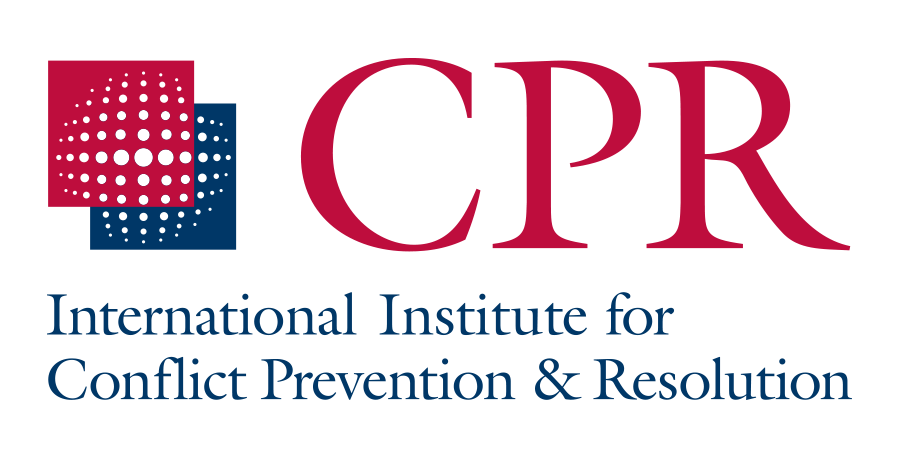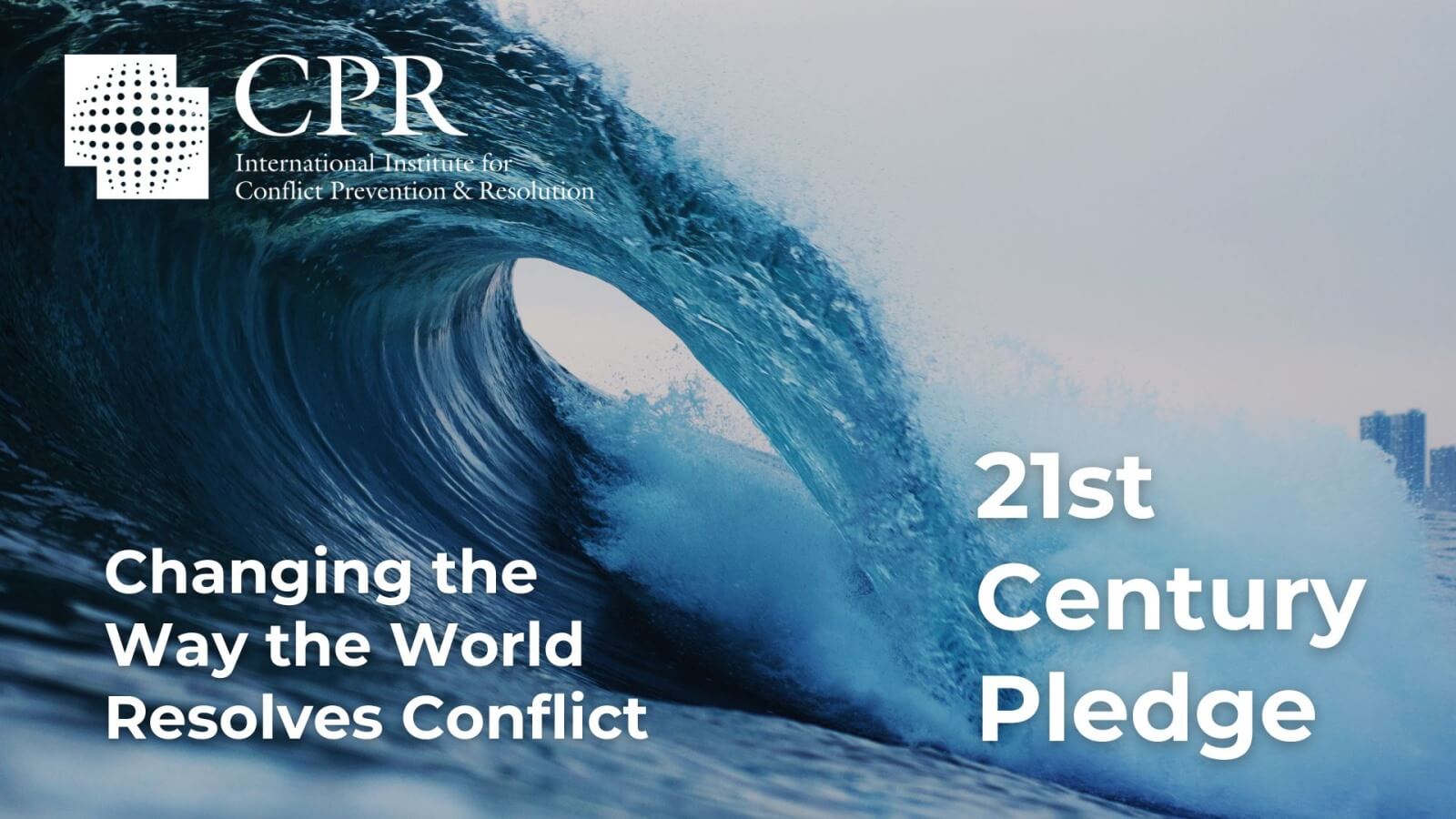Employment-Related Research, Tools & Resources
CPR Institute Members-Only Content
- The Pros and Cons of Employment ADR Programs by Richard R. Ross CPR Institute's Resource Book for Managing Employment Disputes (2004)
Richard R. Ross, formerly Senior Associate General Counsel of Anheuser-Busch Companies, inc., articulates some of the considerations that go into deciding whether -- and why, and how -- to manage employment disputes in a systemic way.
- Classic Staged Design by Jeanne M. Mathews
CPR Institute's Resource Book for Managing Employment Disputes (2004)
Jeanne M. Mathews, Counsel -- Employment Law for General Electric Company relates how General Electric approached the challenge of creating a fair, effective program that was consistent with legal requirements, company objectives, and corporate ethos. In doing so, she provides an excellent introduction to a 'classic" stages system design.
- Organizational Conflict Management Systems for Employment by Melanie Lewis
CPR Institute's Resource Book for Managing Employment Disputes (2004)
Melanie Lewis, presently Director, Solutions Program for Coca-Cola Enterprises, Inc., relates her experiences and 'lessons learned" designing and implementing an employment dispute system for Coca-Cola Enterprises inc. "from scratch."
- The Organizational Ombuds by Mary P. Rowe and Wilbur Hicks
CPR Institute's Resource Book for Managing Employment Disputes (2004)
Dr. Mary P. Rowe Ombudsperson for the Massachusetts Institute of Technology and Wilbur Hicks, formerly Ombuds for Shell Oil Company, and now International Monetary Fund, give an insight into the delicate and intricate workings of the organizational ombuds.
- Direct Consultation - Open Door by Donna M. Malin
CPR Institute's Resource Book for Managing Employment Disputes (2004)
Donna M. Malin, Assistant General Counsel for Johnson & Johnson, relates how Johnson & Johnson has tried to address concerns involving supporting methods to instill trust and confidence in employees, to provide direct yet "safe" opportunities for them to voice concerns and for management to identify problems in the workplace before they become disputes. She supports developing case law that may impose vicarious liability on employers who fail to do so.
- The Utility and Functioning of Peer Review Boards by Nancy L. Vanderlip
CPR Institute's Resource Book for Managing Employment Disputes (2004)
Nancy L. Vanderlip, V. P. and General Counsel, Electric Components, ITT Corporation, explains the phenomenon of "reactive devaluation," by which a suggestion or proposal is discounted by one party because it has been propounded by the other party, and therefore interpreted as self-serving.
- The Evolving Standards and Persistent Challenges of Employment Arbitration by Thomas J. Stipanowich
CPR Institute's Resource Book for Managing Employment Disputes (2004)
Prof. Thomas J. Stipanowich, formerly President & CEO of CPR and now Academic Director, Straus Institute of Pepperdine University School of Law, explains the irony that employment arbitration, which these days few employers encounter as a practical matter, remains a topic of heated and expensive jurisprudence.
- Considerations for Class Action Arbitration by Alfred G. Feliu
CPR Institute's Resource Book for Managing Employment Disputes (2004)
Alfred G. Feliu, of Venderberg and Feliu LLP in New York City, addresses whether employee dispute management programs can or should include putative waivers of class or collective actions.
- Goals of Systems by the CPR Employment Disputes Committee
How Companies Manage Employment Disputes: A Compendium of Leading Corporate Employment Programs (2002)
This chapter discusses ways in which a company or firm can measure its success rate outside of not going to arbitration, and discusses the characteristics which can lead to a higher success rate, such as cycle time, management time, legal costs, rate of litigation, employee turnover, EEOC charges, utilization, rate of resolution at various levels, junior management satisfaction and user satisfaction.
- Structural Overview by the CPR Employment Disputes Committee
How Companies Manage Employment Disputes: A Compendium of Leading Corporate Employment Programs (2002)
This chapter discusses the three-part structure of an ADR systems design for success including scope; scope of participants, the scope of claims, cost, and other characteristics. Examples of how various companies, such as Bank of America crafted their employment program are covered.
- Empirical Observations Conclusions by the CPR Employment Disputes Committee
How Companies Manage Employment Disputes: A Compendium of Leading Corporate Employment Programs (2002)
This chapter discusses how nearly all disputes submitted to systematic employment dispute resolution programs are resolved by agreement prior to the arbitration stage and utilizes examples of various company statistical tracking of their success rates.
- Mainstreaming Guide by the CPR Employment Disputes Committee
CPR Institute's Resource Book for Managing Employment Disputes (2004)
This guide enumerates the steps a Company should take to systematize ADR use in management employment disputes.
- Using Mediation When Dispute Arises by the CPR Employment Disputes Committee
CPR Institute's Resource Book for Managing Employment Disputes (2004)
This checklist assumes that the Company mediation program is voluntary for employer and employee. Voluntary programs require the Company to take steps to encourage employee use when disputes do arise.
- Using Arbitration When Dispute Arises by the CPR Employment Disputes Committee
CPR Institute's Resource Book for Managing Employment Disputes (2004)
This checklist assumes that the Company (a) attempted to resolve the problem by informal means prior to mediation but was unsuccessful in doing so; (b) had no mediation program or had a mediation program that either was not used in the subject dispute or did not succeed; and (c) is either willing to arbitrate or has agreed with the employee to arbitrate the dispute (either prior to or subsequent to the dispute itself).

